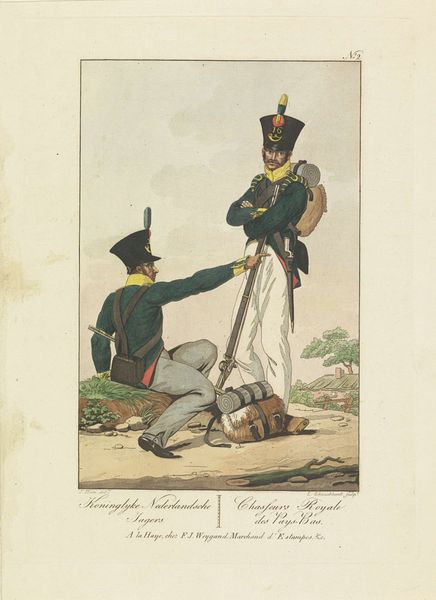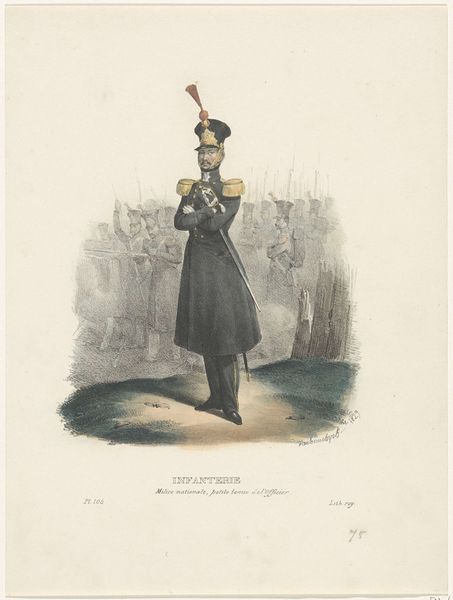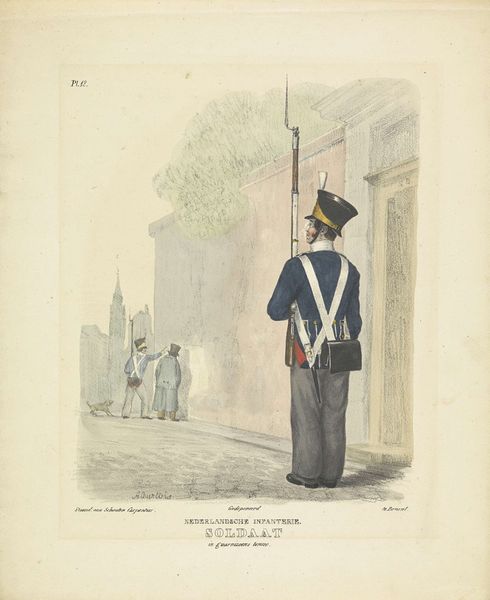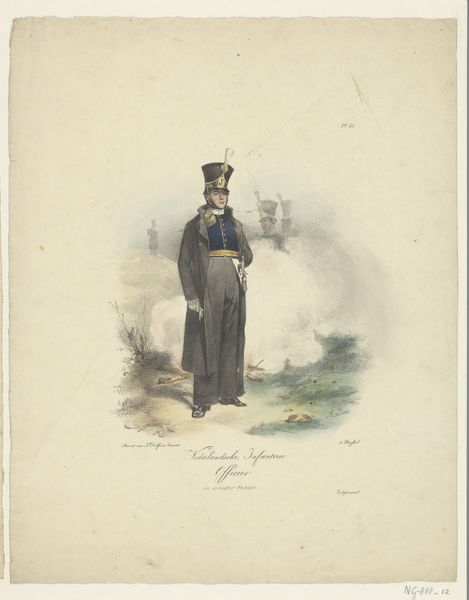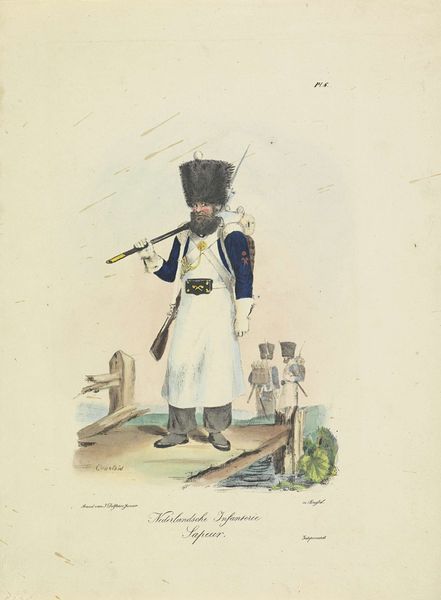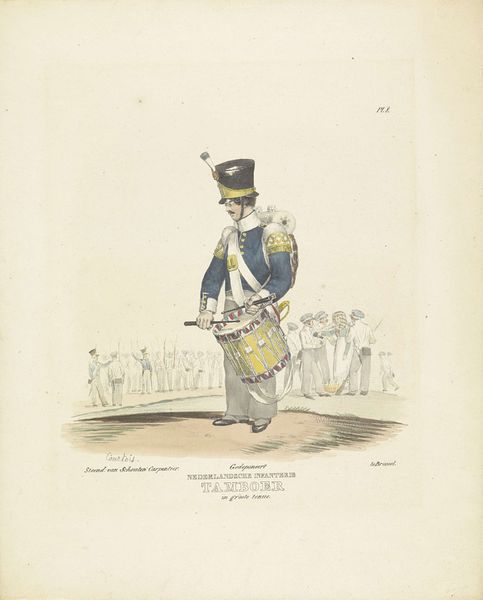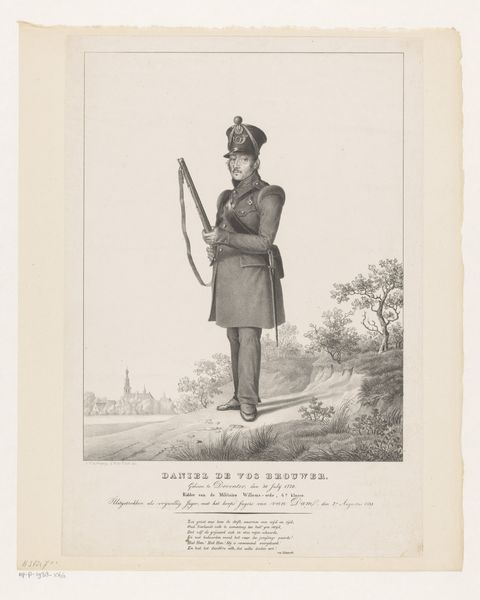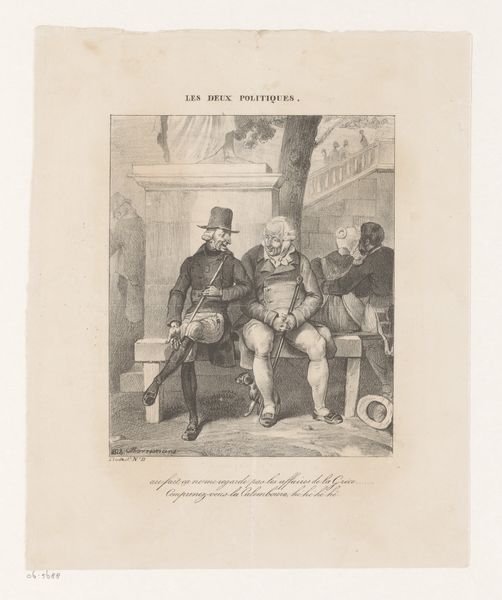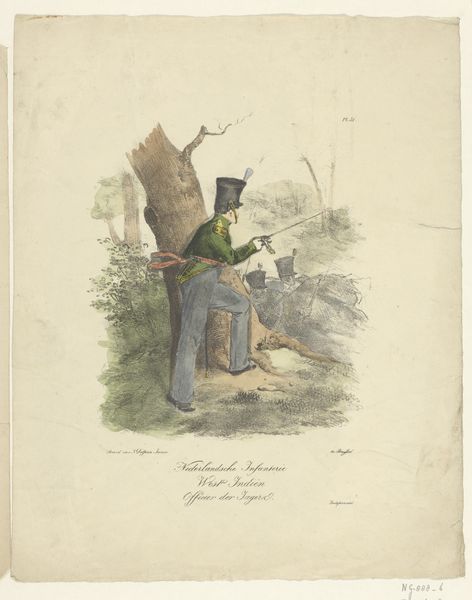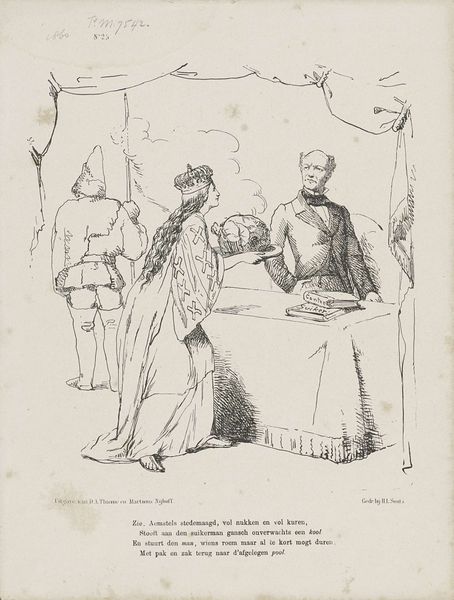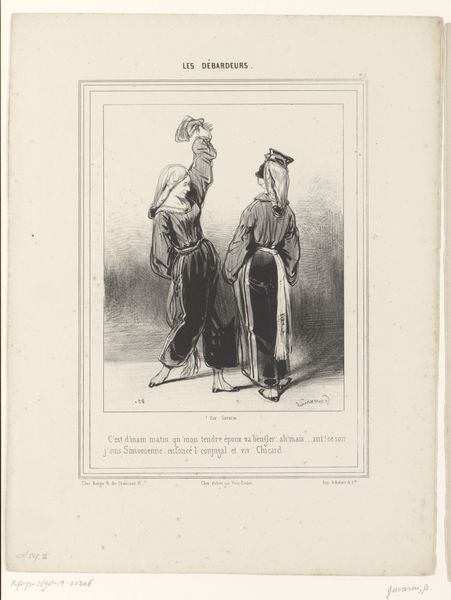
watercolor
#
portrait
#
figuration
#
watercolor
#
romanticism
#
watercolour illustration
#
genre-painting
#
history-painting
#
watercolor
Dimensions: height 370 mm, width 295 mm
Copyright: Rijks Museum: Open Domain
Curator: Here we have a watercolor titled "Flankeur in mars tenue" by A. Courtois, created around 1825-1827. Immediately, I'm struck by the somber mood despite the crisp details in the soldiers' uniforms. The palette feels quite muted, doesn't it? Editor: Yes, muted but the very production of military uniforms is something else; consider the social and economic structure required for outfitting soldiers like this. Were these uniforms outsourced? How was quality control managed, for example? Curator: Fascinating question, as that could provide key social context. Looking at it more traditionally, these figures appear to represent a specific type of Dutch infantryman, "Flankeur" in the French nomenclature still used during the post-Napoleonic era. The relaxed postures of the figures suggest a genre scene, hinting at life outside battles. There's a touch of romanticism as well, no? Editor: The romanticism is almost ironic considering the highly rationalized mode of military production behind the garb. It’s interesting to consider the gap between the romanticized image of the soldier and the very material reality of how those uniforms are produced by many laborers... a large endeavor. I bet textile production was key here! Curator: Certainly. This representation offers layers of meaning when analyzed alongside contemporary history of textile making in this region of Europe at the time. One could dive deeply into class structures of Dutch society at that time, given we know that these infantrymen certainly wouldn't be crafting their own outfits... or purchasing it, for that matter. Editor: The details on the packs and rifles also imply something. While it's a "watercolor illustration," those are instruments of violence. The very material from which that rifle is created embodies extraction, destruction, the entire social history of resource procurement for weaponry! Curator: An excellent point about these materials bearing an embedded history. What stands out for me, though, is this watercolour style as it provides an intriguing contrast to the inherent rigidity and possible oppression of military dress. The gentle washes seem to hint at an introspective reflection by the artist. Editor: A reminder that material histories are deeply political, interwoven into so many layers of meaning.
Comments
No comments
Be the first to comment and join the conversation on the ultimate creative platform.
